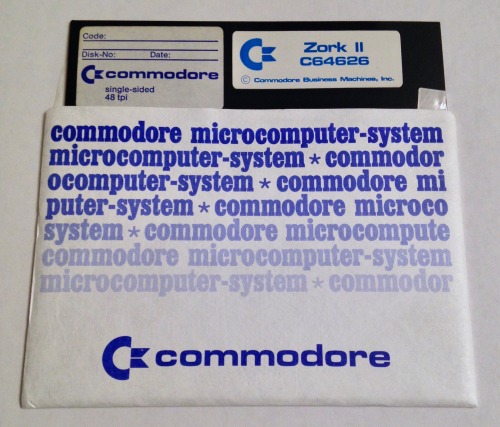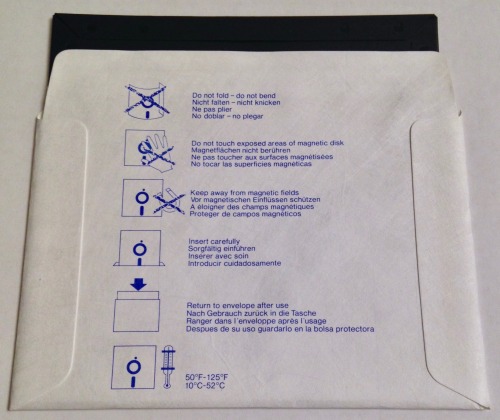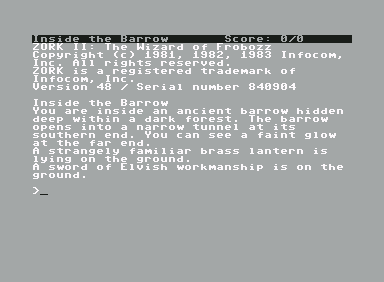Another Commodore 8-bit floppy! And yet another Commodore floppy sleeve and envelop design! This is Zork II for the Commodore 64. I like how it’s got a blank-floppy label on it in addition to the product label – like they just grabbed a bunch of blanks from the office supply shelf and ran them over to the duplicator.
Knowing Commodore, actually, it wouldn’t even surprise me if they had.
http://darth-azrael.tumblr.com/post/170791509305/oldphemera-another-commodore-8-bit-floppy-and
While text adventures are pretty niche now, back when computers were much more limited they were quite popular. No series was more popular than the Zork series by Infocom. Zork II, subtitled The Wizard of Frobozz was first released in 1982 and while it did not appear on as many platforms as the original, the list is still quite impressive and includes the Amiga, Amstrad CPC, Apple II, Macintosh, Atari 8-bit, Atari ST, Commodore 64, Commodore Plus/4, CP/M, DOS, MSX and TRS-80 among others.
The photos in this post relate to the Commodore 64 version but there was no significant difference between the various versions. Most Infocom games ran on their own parser (almost like a virtual machine) and it was this that was converted to various machines. Commodore distributed the Commodore 64 version and you can see how cheap Commodore could be based on the disks they used. It appears they just took blank disks that were probably intended to be sold as such based on the labeling and put the game on them and added a second label. However, this doesn’t affect the quality of the game.
Zork II picks up more or less where the first Zork left off. In Zork I the object was to collect as many treasures as possible. If you collected them all then you achieved a perfect score. Zork II has a bit more of a subtle plot. You still have to collect treasures but the treasures themselves are needed to finish the game. At least some of them as the game can be completed without collecting them all. You just have to figure out how to use them correctly.
The plot revolves around an exiled and slightly senile enchanter. You must figure out how to avoid his tricks and control his magic. This is not an easy game or for the easily frustrated. It will take you much trial and error to solve the various puzzles. However, it offers long hours of entertainment for those who like solving difficult puzzles.
I don’t know that Zork II has ever been re-released on modern systems but it was released by Activision as freeware at one point. You can play via emulation on the system of your choice or even play via your browser (search for Zork II in your favorite search engine and you’ll find it pretty quickly). The browser version is a good way to try it out but it isn’t a practical way to play the whole game because you can’t really save it. If you have never played a text adventure but are an RPG or point and click adventure fan then it is worth giving a try even if just to see where it all started. Some people love text adventure and some people hate them. I would start with Zork I and if you enjoy that one proceed to Zork II and the subsequent sequels. Then there are plenty more vintage text adventures from Infocom and others and even new ones still being created today if you find you enjoy the genre.




